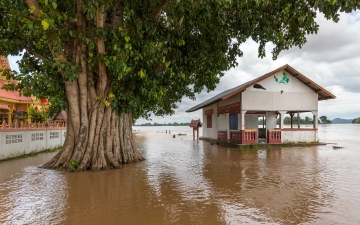690823_4_Coastal Threats_360 px width.jpg

Coastal flood damage from rising sea levels and intensifying cyclones could pose a greater threat to developing countries. Credit: Basile Morin, CC BY-SA 4.0.
Millions of residents chased out of their homes. Trillions of dollars in extra damages. A tenth of coastal crops destroyed. That’s what some developing countries could face from coastal flooding by the year 2100, according to a recent study. Several regions could be especially hard hit, facing costs of more than five percent of their total economies.
Researchers looked at possible coastal flooding at 9,000 locations around the world. They forecast what could happen by the years 2050 and 2100 under worst-case forecasts, with temperatures climbing by up to seven degrees Fahrenheit. The higher temperatures will raise sea level, and could generate stronger cyclones with higher storm surges.
The researchers also considered whether countries could afford to protect themselves by building seawalls, improving drainage, planting mangrove forests, and taking other actions.
Without good countermeasures, the global cost of flood damage could add up to almost three percent of the worldwide economy. And the number of people flooded out could rise from 34 million in 2015 to 246 million in 2100. With good countermeasures, though, the impact could be limited to less than half of that.
Developed countries have the resources to protect themselves. But developing countries could face much more expensive futures. And the worst damage could be inflicted on the Nile Delta in Egypt and similar regions in western Africa and Asia—regions that can’t afford our warming climate.

